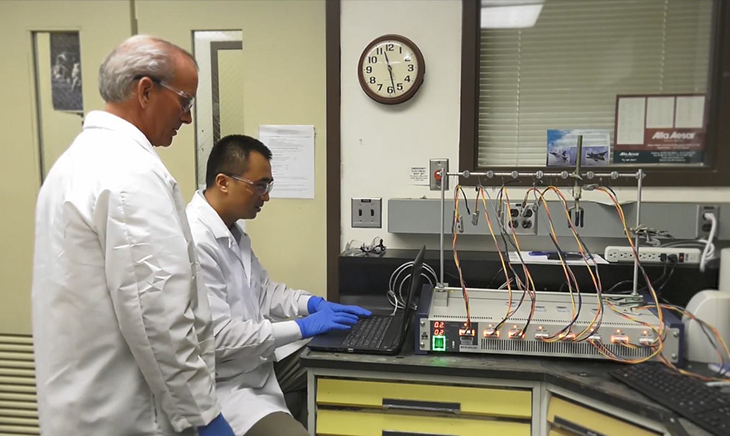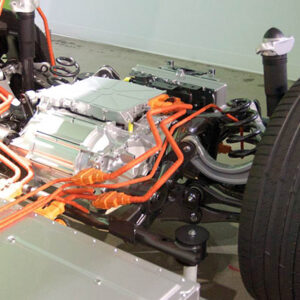
In NASA’s continuous quest for innovation, they’ve expanded their horizons beyond launching robots into space and embarked on a journey of sustainable aviation research. In doing so, they may have unraveled the secret to crafting a lighter, safer, and more powerful battery technology that surpasses the capabilities of traditional lithium-ion batteries.
This groundbreaking development is poised to revolutionize the world of electric vehicles and pave the way for more efficient and sustainable energy storage solutions.
The reigning champions of electric vehicle power, lithium-ion batteries, have long been plagued by a fundamental law – liquid electrolytes. These liquid components render them susceptible to various issues, including overheating, fire hazards, and a gradual decline in charge retention over time. In contrast, NASA’s SABERS (Solid-state Architecture Batteries for Enhanced Rechargeability and Safety) project is pioneering the development of solid-state batteries that circumvent these limitations.
SABERS is generously funded by NASA’s Convergent Aeronautics Solutions project, an initiative designed to explore cutting-edge technologies that can address aviation’s most pressing challenges. In this context, the primary challenge at hand is achieving battery-powered flight, a transformative concept that has the potential to significantly reduce carbon emissions associated with air travel.
Air travel is a prominent contributor to global greenhouse gas emissions, responsible for approximately 2% of the total emissions worldwide. The aviation industry’s heavy reliance on jet fuel has prompted the exploration of alternative solutions to mitigate its environmental impact. Batteries, particularly advanced energy storage solutions like those developed by SABERS are emerging as a promising avenue to reduce the carbon footprint of aviation.
Over the past year, SABERS has dedicated itself to perfecting the science of solid-state batteries. The results of their research have been nothing short of amazing, with their experimental batteries achieving a discharge rate that surpasses any existing battery on the market by a staggering factor of ten. What’s even more astonishing is that they managed to further enhance this discharge rate, achieving a five-fold improvement. This significant boost in discharge power has the potential to revolutionize energy storage and utilization across multiple industries.
The innovation at the heart of SABERS’ success lies in the architecture of its solid-state batteries. Unlike traditional lithium-ion batteries that rely on liquid electrolytes, SABERS’ batteries employ sulfur and selenium cells that are stacked directly on top of one another without the need for external casings. This design innovation has dual benefits: it not only contributes to weight savings but also permits the stacking of multiple batteries without any physical separation between them. This ingenious approach results in highly compact and efficient energy storage solutions with the potential to transform the power and range of electric vehicles.
Rocco Viggiano, principal investigator for SABERS at NASA’s Glenn Research Center in Cleveland said, “Not only does this design eliminate 30 to 40 percent of the battery’s weight it also allows us to double or even triple the energy it can store, far exceeding the capabilities of lithium-ion batteries that are considered to be the state of the art.”
One of the most compelling achievements of the SABERS project is the remarkable energy density they’ve attained – an impressive 500 watt-hours per kilogram. This energy density is double that of conventional electric car batteries, signifying a substantial leap forward in the energy storage capabilities of solid-state batteries. This breakthrough holds the promise of making electric vehicles more practical, efficient, and appealing to a broader audience.
In their pursuit of perfection, NASA explains that their primary objective for SABERS this year was to ensure that their battery technology not only met stringent energy and safety targets but also demonstrated its reliability and safety under realistic operating conditions and at maximum power levels.
To achieve this, SABERS has partnered with Georgia Tech, collaborating to apply diverse methodologies and approaches that have significantly contributed to the advancement of their solid-state batteries.
Viggiano explained, “Georgia Tech has a big focus on micromechanics of how the cell changes during operation. That helped us look at the pressures inside the battery, which then helped us improve the battery even more.”
“It also led us to understand from a practical standpoint how to manufacture a cell like this, and it led us to some other improved design configurations,” he added.
What are your thoughts? Please comment below and share this news!
True Activist / Report a typo


